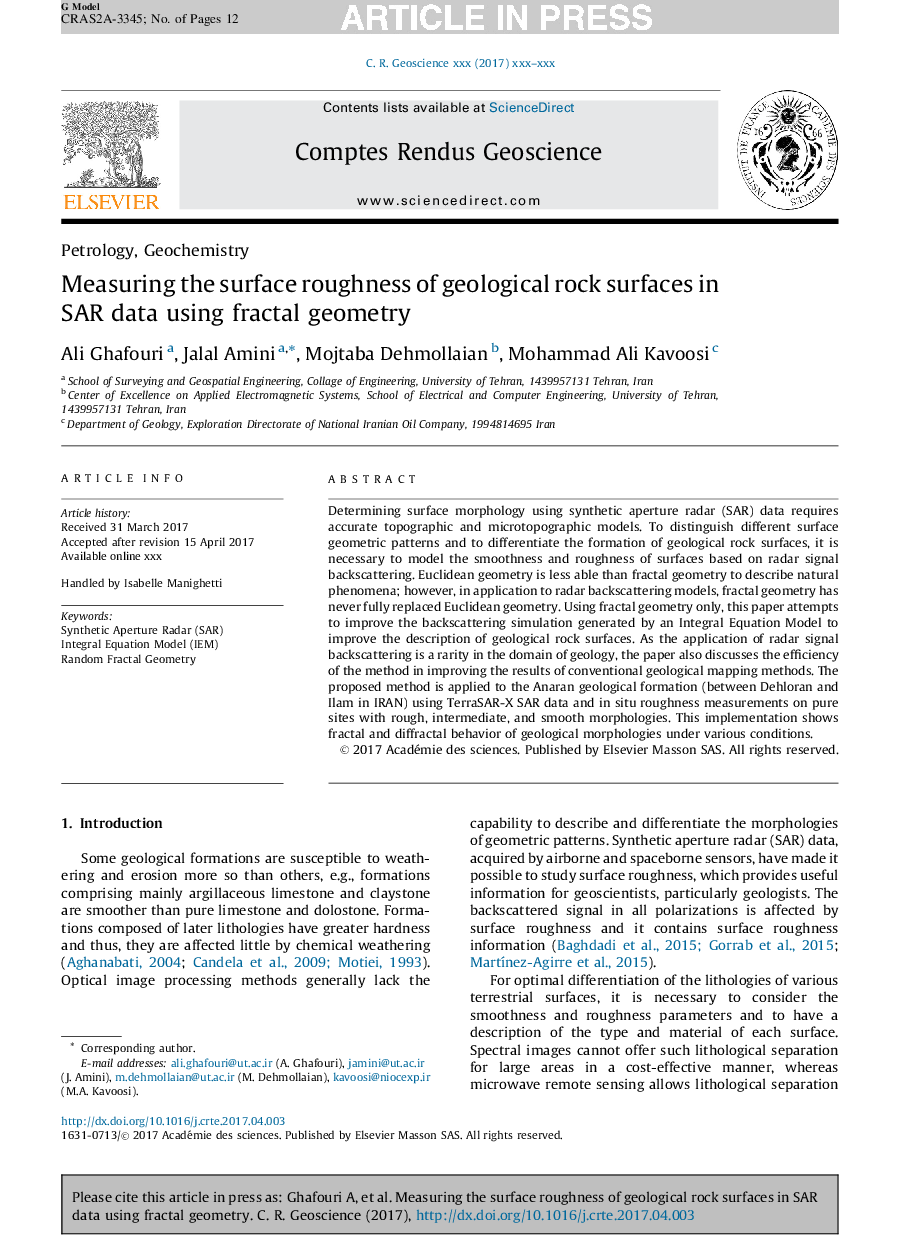| Article ID | Journal | Published Year | Pages | File Type |
|---|---|---|---|---|
| 5755199 | Comptes Rendus Geoscience | 2017 | 12 Pages |
Abstract
Determining surface morphology using synthetic aperture radar (SAR) data requires accurate topographic and microtopographic models. To distinguish different surface geometric patterns and to differentiate the formation of geological rock surfaces, it is necessary to model the smoothness and roughness of surfaces based on radar signal backscattering. Euclidean geometry is less able than fractal geometry to describe natural phenomena; however, in application to radar backscattering models, fractal geometry has never fully replaced Euclidean geometry. Using fractal geometry only, this paper attempts to improve the backscattering simulation generated by an Integral Equation Model to improve the description of geological rock surfaces. As the application of radar signal backscattering is a rarity in the domain of geology, the paper also discusses the efficiency of the method in improving the results of conventional geological mapping methods. The proposed method is applied to the Anaran geological formation (between Dehloran and Ilam in IRAN) using TerraSAR-X SAR data and in situ roughness measurements on pure sites with rough, intermediate, and smooth morphologies. This implementation shows fractal and diffractal behavior of geological morphologies under various conditions.
Keywords
Related Topics
Physical Sciences and Engineering
Earth and Planetary Sciences
Earth and Planetary Sciences (General)
Authors
Ali Ghafouri, Jalal Amini, Mojtaba Dehmollaian, Mohammad Ali Kavoosi,
